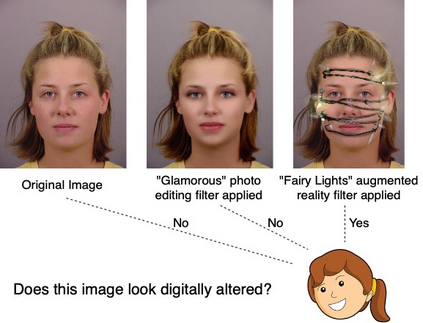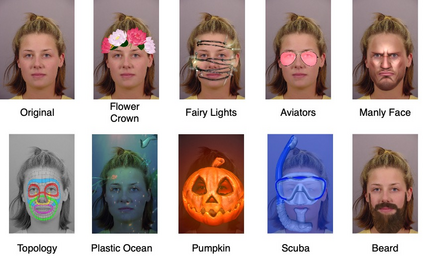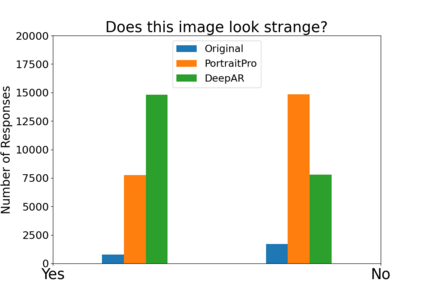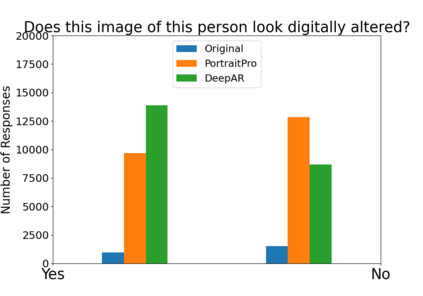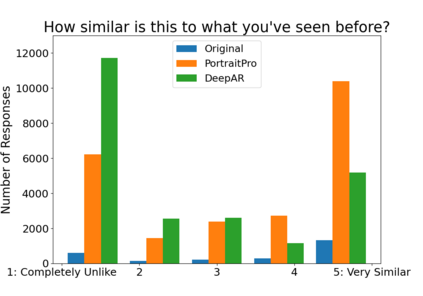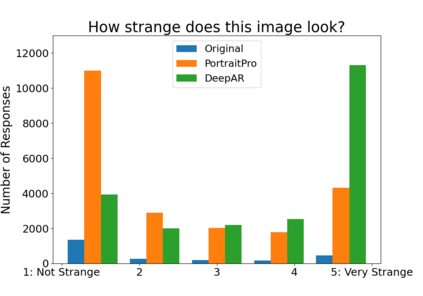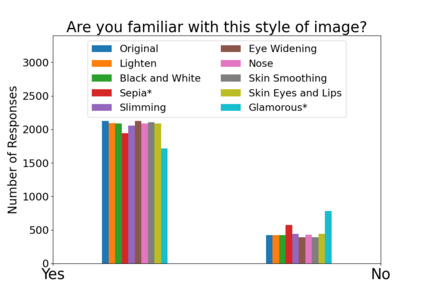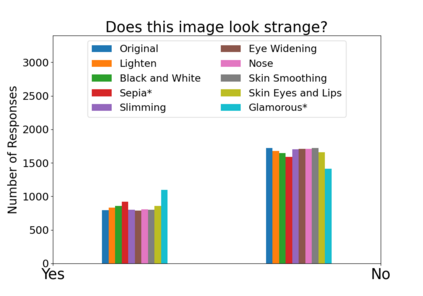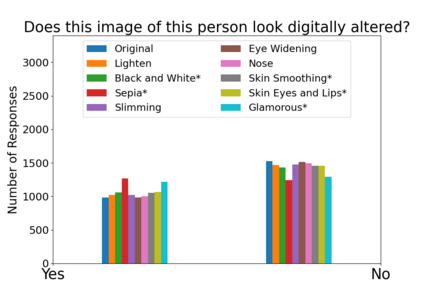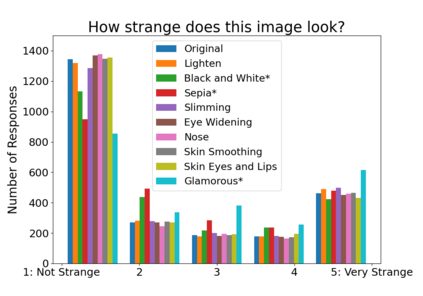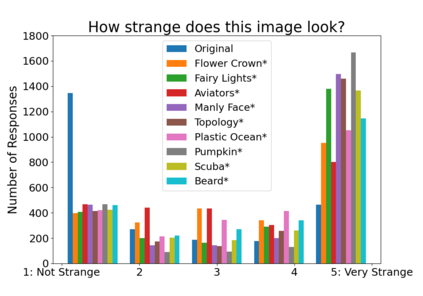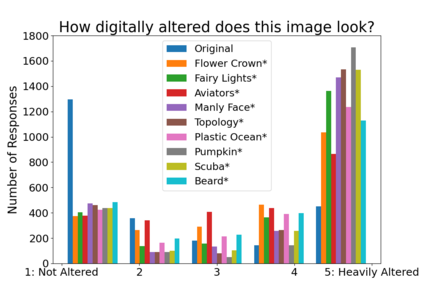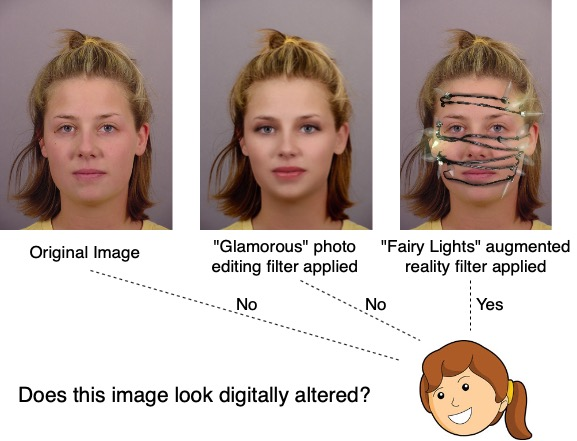Augmented reality and other photo editing filters are popular methods used to modify images, especially images of faces, posted online. Considering the important role of human facial perception in social communication, how does exposure to an increasing number of modified faces online affect human facial perception? In this paper we present the results of six surveys designed to measure familiarity with different styles of facial filters, perceived strangeness of faces edited with different facial filters, and ability to discern whether images are filtered or not. Our results indicate that faces filtered with photo editing filters that change the image color tones, modify facial structure, or add facial beautification tend to be perceived similarly to unmodified faces; however, faces filtered with augmented reality filters (\textit{i.e.,} filters that overlay digital objects) are perceived differently from unmodified faces. We also found that responses differed based on different survey question phrasings, indicating that the shift in facial perception due to the prevalence of filtered images is noisy to detect. A better understanding of shifts in facial perception caused by facial filters will help us build online spaces more responsibly and could inform the training of more accurate and equitable facial recognition models, especially those trained with human psychophysical annotations.
翻译:强化现实和其他照片编辑过滤器是用来修改图像的流行方法,特别是脸部图像,在网上张贴。考虑到人类面部感知在社会交流中的重要作用,在网上接触越来越多的修改面孔如何影响人类面部感?在本文中,我们介绍了六次调查的结果,这些调查的目的是衡量对不同面部过滤器的熟悉程度,用不同面部过滤器编辑面部的奇特性,以及辨别图像是否被过滤的能力。我们的结果表明,脸部通过照片编辑过滤器过滤,改变图像的颜色,修改面部结构,或增加面部美化,这些过滤器往往被认为与未修改面部面部相类似;然而,通过强化的现实过滤器(\ textit{i.e.}覆盖数字物体的过滤器)的过滤结果如何影响人类面部面部感觉与未修改面部面部的熟悉程度不同。我们还发现,根据不同的调查问题表达方式,对面部感知因过滤图像的流行而变化是噪音的检测。更好地了解面部感知觉的转变会帮助我们建立更负责任的在线空间,特别是经过训练的心理识别模型。</s>

